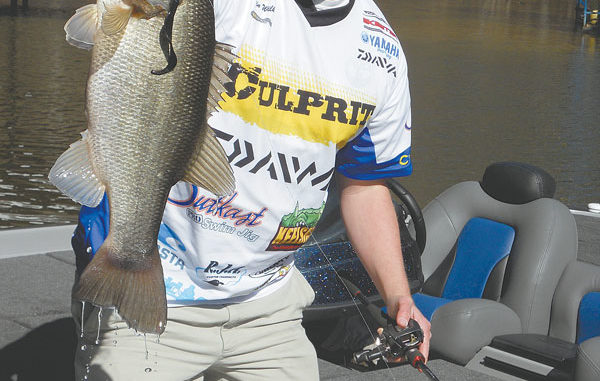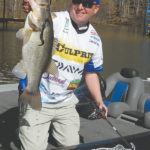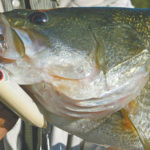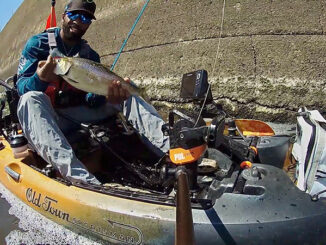
A few Octobers back, I discovered a magic cove on Falls Lake. There were so many bass in there that you could simply cast a big Zara Spook down the middle, over 20 feet of water and catch one nearly every cast. It was so much fun, I went almost every day until the water was in the low 40s in December. I could still catch some on top when it was 48 degrees, which is rare. As it dipped lower, though, I had to really slow-crank a Shad Rap to catch them. Then one day near Christmas they were all gone — it was not a Merry Christmas. I never relocated that school again.
The bass in that cove went further and further back as the water temperature dropped until it either killed the shad or met some threshold for bass comfort. One day, everything was gone. I did hammer on them pretty good for months. One day I’ll never forget — I got 27 in a row on a T.D. Vibration, the most to this day I’ve ever caught on consecutive casts.
When fishing heats up as autumn cools down, shad migrate to the backs of the creeks. Sometimes, there are just too many shad. I prefer the creeks that are not as jammed with shad, as the bass are more likely to eat a lure with less bait around. There still needs to be bait to attract the bass, but sometimes there is just too much bait to deal with. Smaller creeks and even big coves with a small drain in the back can be perfect. You will also have less pressure in these areas.
Several things made that cove special. First, the bait stayed scattered and was not able to get in a mega-school. The bass kept them broken up and easier targets. I noticed the bass worked in small groups most of the time — three to five fish. These were not lunkers, but nice 2½- pounders on average. I did catch a lone 7-pound fish out of that cove, but it was the only big one in months.
Next, this was not a major creek; I never saw another boat for three months! Not having to compete with a lot of boats — and not having those boats running on top of the fish — that can keep fishing good longer.
Finally, this cove had a small ditch that ran off of a shallow flat swinging several times from bank to bank, making nice little feeding flats for the bass.
No one bait was the best. It was just a place that was full of bass, and they would bite something different a little better than the bait I fished the day before.
You read so many articles that say go to the back of major creeks in the fall and throw square-billed crankbaits. That is good advice, but there are other things to look at.
On clear lakes, when the thermocline disappears, the bass can go really deep. Often, those fish in the backs of the creeks were there long before October rolled around in an effort to stay in well-oxygenated water. This is a whole other population that becomes open-water roamers similar to stripers. These bass can be targeted with good electronics and drop shots below bait really deep — like 50 feet. I’m not very good at that, but many of the my competitors on the Bassmaster Elite series have discovered this and have done quite well at lakes like Table Rock in Missouri. I would imagine that our lakes in western North Carolina can be good with this, and I know they do it at Kerr. Lake.
So keep an open mind in the fall; they don’t all go to the back of a major creek.






Be the first to comment